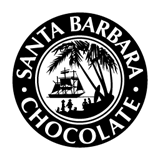One of the most unexpected yet rewarding aspects of working in the chocolate industry is the travel. As someone who works closely with cacao growers, chocolate makers, and suppliers, getting from one location to the next isn’t always simple. Many of these small, hand-made chocolate makers are tucked away in out of the way places, away from airports, roads, and other modern transportation hubs.
What this often means is that the journey becomes just as meaningful as the destination.
Traveling Through Spain by Road
On a recent sourcing trip through Spain, I found myself relying entirely on a rental car and printed maps. Though GPS has made navigation easier, it isn’t always reliable in rural or mountainous areas. And when you're heading into quiet regions where artisanal chocolate is being produced, internet signals fade fast. Driving along coastal and countryside roads without a solid sense of direction might sound like a hassle, but in reality, it became the most memorable part of the trip.
Along the road, there were farms, stone-built towns and green hills. The areas became more peaceful as I moved farther away from cities. Because I didn't have a strict schedule or set deadline, I was free to take turns that weren't planned. That's how I got up near the town of Lekeitio in northern Spain.
The Charm of Getting Lost
It’s not often that one sets out hoping to get lost. But when you leave enough room in your schedule, wandering becomes part of the journey. That’s what happened as I searched for a lesser-known chocolatier located somewhere between Bilbao and San Sebastián.
Taking a wrong turn down a quiet side road, I ended up several miles from the planned route. The detour led me to small clusters of whitewashed homes with red-tiled roofs, seaside cliffs, and small harbors full of fishing boats. A short stop to stretch my legs turned into a two-hour walk through narrow streets and a chance meeting with a local who gave me directions and, more importantly, made me feel like I had a warm relationship with them.
Getting lost had led me to something I would never have planned: time to slow down, meet locals, and see how life unfolds in quieter towns away from the usual tourist paths.
Chocolate, Craft, and Connection
The purpose of my visit to Spain was to meet with small-batch chocolate makers who work closely with direct-trade cacao. These artisans don’t produce chocolate for mass distribution. Instead, they focus on quality, flavor, and tradition values that align with what we believe in at Santa Barbara Chocolate.
Because many of these partners operate in secluded regions, the only way to reach them is by road. Visiting these places in person gives insight into their methods, ethics and sourcing practices. It's not just about samples or contracts. It’s about understanding the story behind the chocolate and the people who dedicate their lives to making it.
The drive through Spain wasn’t just logistics — it was a way to witness how local culture, agriculture, and tradition all shape the final product.
A Photo with a Story
While I was lost near Lekeitio, I paused to take a photo of the scenery — a quiet coastal view with fog lifting off the hills and small farms dotting the landscape. That picture later became one of my favorite travel photos, not because it was staged or planned, but because it makes me think of how important it can be to take a detour when you least expect it.
The photo tells a quiet story of slow travel and chocolate sourcing done with patience, curiosity, and trust in the journey.
Why Small Producers Are Worth the Drive
Working with remote chocolate suppliers isn’t always convenient. Some operate with minimal infrastructure, and reaching them means navigating old roads, working through language differences, and adapting to regional customs. But this effort pays off in the integrity of the final chocolate.
We build trust and reciprocal respect by going to these places ourselves. You can watch as the beans are roasted, the fermentation process takes place, and the cacao is handled at each stage. This knowledge informs how we select beans and what we bring into our chocolate making process at Santa Barbara Chocolate.
It also helps us support ethical practices directly. There are no short-cuts being taken when we visit, and we can be sure that the ingredients are found responsibly and that farmers are being paid fairly.
How Travel Shapes Chocolate Knowledge
There’s something grounded about going to the source. Every trip adds another layer of understanding to the chocolate-making process — from soil to bar. The terrain, the language, the farming style, and even the architecture in these regions tell you something about the people and their approach to cacao.
Traveling this way isn’t about tourism or convenience. It’s about being present where the work happens. Each road taken — even the wrong ones — opens up a view of how chocolate connects communities.
Leaving Room to Wander
If you ever find yourself traveling, whether for work or personal reasons, try leaving space in your schedule to take a detour. Let the day unfold without following a strict map. You might meet someone with a story to tell, find a family-run coffee shop with the best coffee you've had in years, or learn something that your guides couldn't have taught you.
Getting lost, it turns out, isn’t about confusion. It’s about creating space for something you didn’t expect. For me, that meant new relationships, a better understanding of the people behind the chocolate, and moments that continue to shape the way I work.
